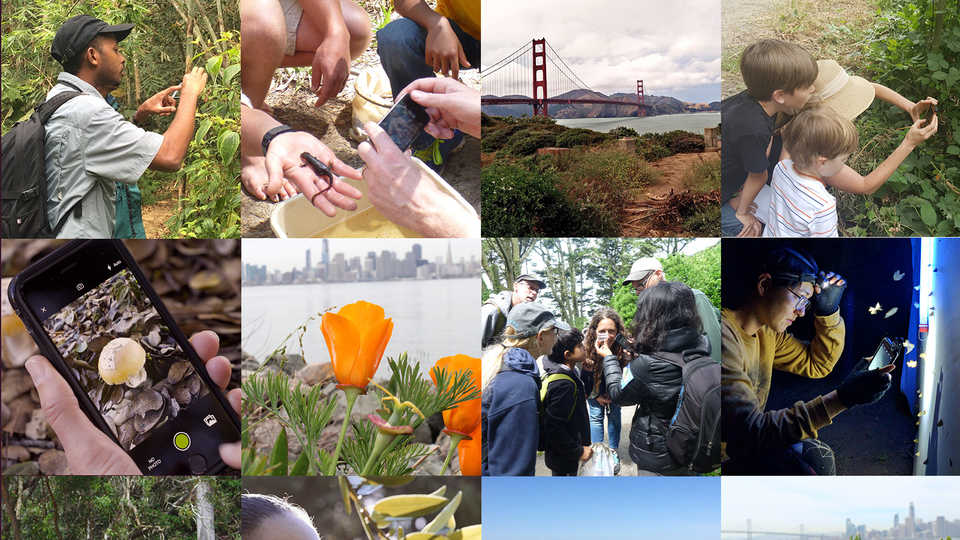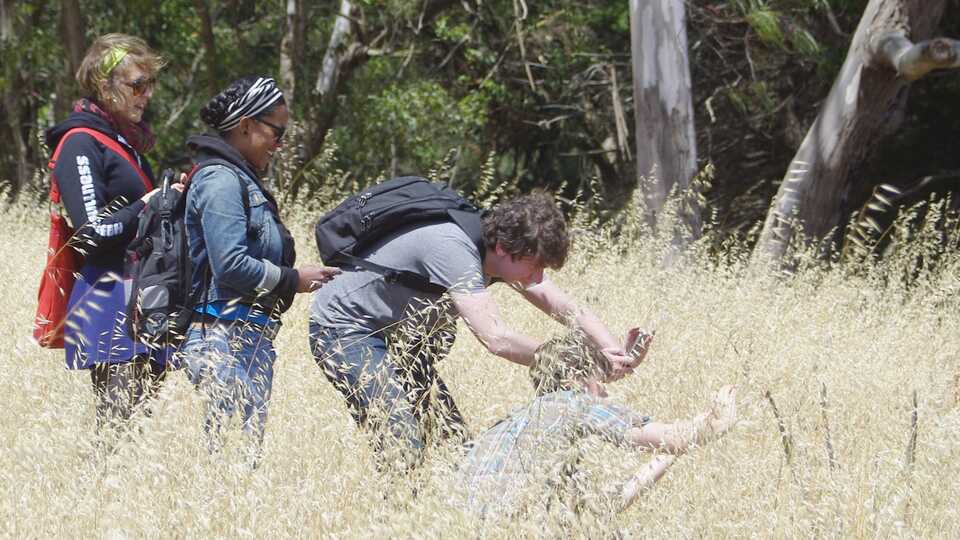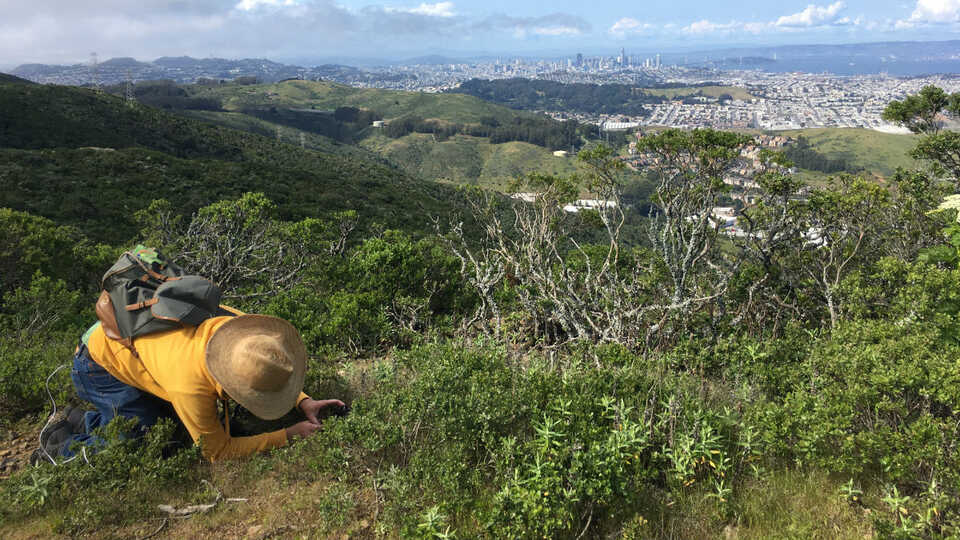The California Academy of Sciences is a renowned scientific and educational institution dedicated to exploring, explaining and sustaining life on Earth. Based in San Francisco’s Golden Gate Park, it is home to a world-class aquarium, planetarium, and natural history museum, as well as innovative programs in scientific research and education—all under one living roof. Visit calacademy.org for more information.
Citizen scientists from across the country submit over 120,000 iNaturalist observations in the wildly successful, second-annual competition.
SAN FRANCISCO (April 22, 2017) — Launched on April 14, 2017, the second annual City Nature Challenge concluded just in time for Earth Day and the March for Science. After organizing the first-ever challenge in 2016, the Natural History Museum of Los Angeles County (NHMLA) and San Francisco’s California Academy of Sciences expanded the multi-day event beyond the friendly SF–LA rivalry to involve 16 cities across the country. The competition invited current and aspiring citizen scientists, nature and science fans, and people of all ages and science backgrounds to submit pictures of plants, animals, and fungi using the free app iNaturalist. Highlights from around the country include a great horned owl in New York City, orca whales off Seattle, and LA’s world-famous mountain lion, P-22. City Nature Challenge participants added a staggering 124,092 observations of nature to iNaturalist during the platform’s biggest week in history.
The 23 partner institutions aim to build community around the process of nature discovery and observation. The City Nature Challenge built on last year’s success and inspired a nearly sevenfold increase in iNaturalist observations compared with the same week in 2016; last year saw 18,284 iNaturalist observations from the participating regions during the same five days. Dallas/Fort Worth tallied the most observations this year while Houston observed the greatest number of species. Los Angeles had the most participants while also adding the most new users to iNaturalist, and Salt Lake City saw the greatest increase in engagement compared to the same five days last year. Across all regions, over 4,000 City Nature Challenge contributors observed 8,557 species—2,313 of which were found in the San Francisco Bay Area—showcasing each region's utterly unique (and sometimes shared) flora and fauna.
National by the numbers
-
4,051 citizen science participants
-
124,092 observations submitted to iNaturalist
-
Contributors averaged 30 observations
-
8557 species documented
-
Top contributors were Academy Curator Dr. Brian Simison and urban wildlife biologist Sam Kieschnick. Simison directs the Academy’s Center for Comparative Genomics, a state-of-the-art genomics lab that helps scientists from all over the world investigate evolution, and tallied 1145 observations this week. Kieschnick works for Texas Parks and Wildlife and tallied 1126 observations this week.
-
Most observed species: mallard duck.
-
The five most observed species were the mallard duck, honey bee, American robin, western fence lizard, and the Canada goose.
San Francisco Bay Area by the numbers
-
651 citizen science participants
-
23,024 observations submitted to iNaturalist
-
Contributors averaged 35 observations
-
2,313 species documented
-
Top contributors were Academy Curator Dr. Brian Simison and citizen scientist Donna Pomeroy. Pomeroy is a wildlife biologist and nature photographer active with the Sequoia chapter of the Audubon Society. She made 893 observations of 528 species.
-
Most observed species: the California poppy
-
The five most observed species are California native plants, including iconic California poppies and poison oak.
The current landscape of urban biodiversity is poorly understood. As global human populations appear increasingly concentrated in cities, understanding urban biodiversity—and our impact on it—is a crucial part of understanding our shared future. This year, journalist Sally James made a rare observation of a coyote in the middle of Seattle while citizen scientist “dshamlet” spotted a Cooper’s hawk that broke its neck after striking a window in San Francisco. Both observations underscore the challenges wildlife face in urban settings.
“From busy city centers to remote forests and coastal waters, citizen science observations increase our understanding of how biodiversity is changing across various regions,” says Alison Young, the Academy’s Citizen Science Engagement Coordinator. “This year, participation in the City Nature Challenge grew to a national scale, allowing all of us to take a close look at the flora and fauna unique to 16 participating cities. We are thrilled by this uptick in data collection and the value it will lend to identifying larger trends around the world.”
“Citizen science is a wonderful way to mobilize communities,” adds Dr. Rebecca Johnson, a manager of the Academy’s Citizen Science Program and avid bioblitzer. “In a time when people are trying hard to make their voices heard, this is a way to speak up for Nature and use citizen science to document biodiversity across the landscape—from National Parks, open spaces, and farms to local parks and city streets.” Large pools of data, including those built by iNaturalist and natural history museums, help authorities make informed conservation decisions that allow humans to sustainably coexist with regional plant and animal life.
Top five San Francisco observations
Partner city observations available upon request.
-
Marbled murrelet These plump, endangered seabirds nest in coastal redwoods and were spotted by two avid birders and bioblitzers—Donna Pomeroy and Jennifer Rycenga—in San Mateo County. Pomeroy was a top contributor for San Francisco in the City Nature Challenge. Rycenga is the president of Sequoia Audubon, a professor of religious studies at San Jose State University, and an avid naturalist.
-
Tufted puffin 27 miles off the California coast, the Farallon Islands are an important marine sanctuary that mark the southernmost nesting range for the tufted puffin. Peter Winch, an educator with the Greater Farallones National Marine Sanctuary and a naturalist for The Oceanic Society, spotted the tufted puffin while on a whale-watching trip.
-
Marin dwarf flax Biologist Sarah Minnick of Marin County Parks and biologist Michael Chasse of the National Park Service spotted this rare annual herb growing in serpentine soil, which is rich in minerals and drives diverse plant growth across the state. Marin dwarf flax is endemic to California, meaning it is found nowhere else on Earth.
-
Serpentine jewelflower The serpentine jewelflower is endemic to California. The annual flower has a strong affinity for serpentine soil.
-
Mission Blue butterfly Once relatively common in coastal scrubland and grassland habitats from San Francisco, Marin, and San Mateo counties, the Mission Blue was one of the first insects ever placed on the Endangered Species list (due to habitat loss) in 1976. Inspirational teacher and naturalist Liam O’Brien has worked tirelessly to save this and other butterflies in the San Francisco Bay Area. This week, O'Brien captured photos of Plebejus icarioides ssp. missionensis' host plants, food plants, and its eggs.
City Nature Challenge Scope
April 14, 2017 – April 18, 2017
San Francisco Bay Area (9 counties that touch San Francisco Bay)
National Leaderboard (16 cities, 23 partner institutions)
Press Contacts
If you are a journalist and would like to receive Academy press releases please contact press@calacademy.org.
Digital Assets
Hi-res and low-res image downloads are available for editorial use. Contact us at press@calacademy.org to request access.


